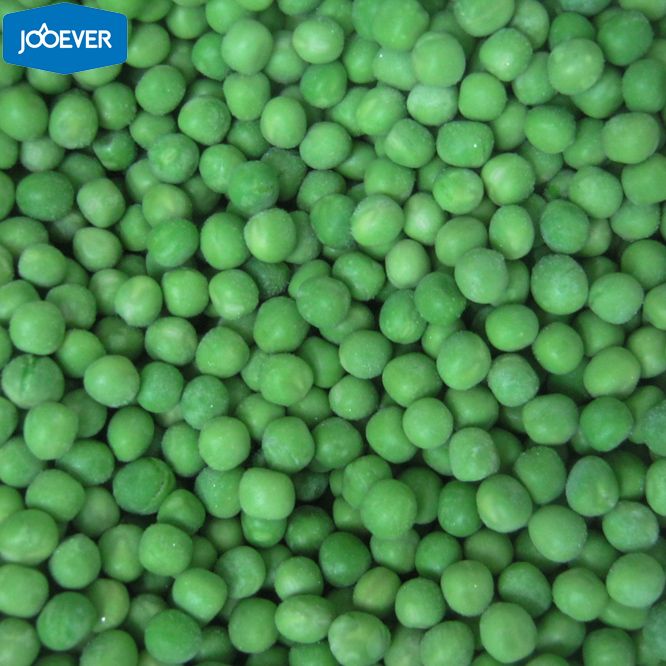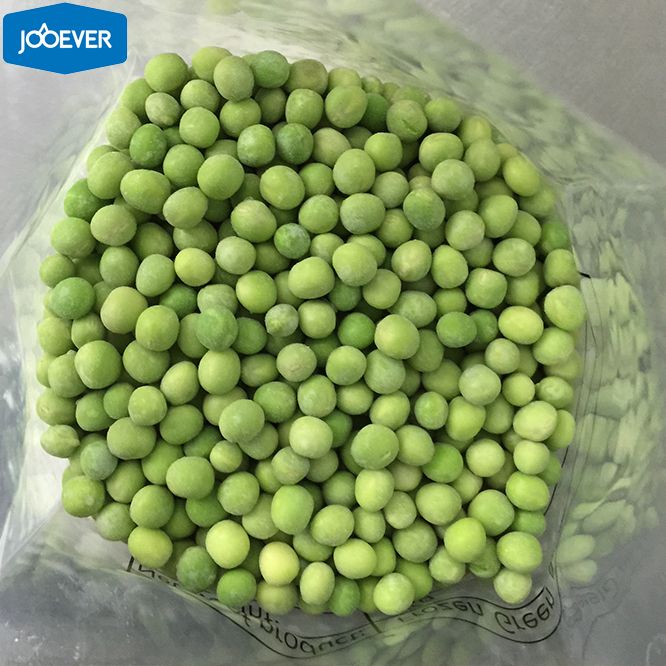Your reliable partner for frozen foods
Green peas are small, round, and sweet, often found on dinner plates around the world. Technically, they belong to the legume family, just like chickpeas, beans, and lentils. However, most people treat them as vegetables because of how they are eaten and prepared. Whether served fresh, canned, or frozen, green peas are valued not just for their taste but also for their impressive nutritional content.
When it comes to nutrition, green peas are much more than a simple side dish. One cup of boiled peas contains only about 134 calories but is packed with protein, fiber, vitamins, and minerals. They are an excellent source of vitamin K, vitamin C, folate, magnesium, and iron. With 8 grams of protein and nearly 9 grams of fiber per cup, they stand out as one of the most nutrient-dense foods in the frozen vegetables category. Preparation also matters—steaming peas preserves more nutrients than boiling, and frozen peas maintain most of their natural vitamins since they are processed quickly after harvest.

Protein is one of the main reasons green peas are so beneficial. With 8 grams per cup, peas provide an easy-to-digest plant-based protein that supports muscle growth, tissue repair, and energy production. For vegetarians and vegans, peas are an excellent protein alternative to meat, making them a valuable part of balanced diets.
Another major benefit of eating green peas is their high fiber content. Most of the fiber is insoluble, which helps regulate digestion and prevent constipation. A fiber-rich diet also promotes healthy gut bacteria, which play an important role in overall wellness.
Because green peas are rich in both fiber and protein, they help you feel full for longer. This reduces the urge to snack between meals and makes it easier to manage your calorie intake. Including peas in meals can support long-term weight goals without sacrificing nutrition.
Fights Inflammation with Antioxidants
Green peas are rich in phytonutrients and polyphenols, natural compounds that fight inflammation in the body. These antioxidants help protect cells from damage caused by free radicals and reduce the risk of chronic conditions such as heart disease and cancer.
The bright green color of peas comes from carotenoids, particularly lutein and zeaxanthin. These compounds are known to protect eyes from harmful blue light and support long-term vision health. They also help maintain healthy skin by reducing oxidative stress.
Magnesium and potassium found in peas are essential for heart health. Magnesium helps regulate heart rhythm and blood pressure, while potassium supports healthy circulation. Together, these nutrients contribute to a stronger cardiovascular system.
Green peas also have a low glycemic index, which means they do not cause a sudden rise in blood sugar. Their combination of protein and fiber slows digestion, helping to stabilize glucose levels. For people managing diabetes or seeking balanced energy, peas are a smart food choice.

While peas are generally safe and healthy, there are a few things to keep in mind. Some people may experience allergies, particularly with pea protein, which is now used in many processed foods. Peas also contain natural compounds called antinutrients, which can limit mineral absorption, though cooking or soaking peas reduces these levels significantly. In addition, because peas are high in fiber, they may cause gas or bloating in some individuals.
Both fresh and frozen green peas provide excellent nutrition, but frozen peas have some practical advantages. They are harvested at peak ripeness and frozen immediately, which locks in nutrients and flavor. Frozen peas are also convenient, available year-round, and reduce food waste thanks to longer storage life. For busy households and food businesses, frozen green peas are a reliable choice that combines health benefits with practicality.
One of the best things about green peas is their versatility. They can be steamed, boiled, or sautéed and served as a side dish. They blend well into soups, stews, stir-fries, rice dishes, and pasta. For something different, peas can be added to salads, turned into a creamy pea hummus, or even used in smoothies for an extra boost of nutrients. Frozen peas are especially convenient, as they can be cooked straight from the freezer without thawing.
Green peas also play a role in sustainable eating. Frozen peas help reduce food waste, as they last much longer than fresh peas. Efficient freezing technology keeps them safe, nutritious, and ready to use, ensuring that consumers around the world can enjoy them at any time of the year. In the global frozen vegetables market, peas are one of the most widely traded items, reflecting their importance in both health and food supply chains.
Green peas are more than a simple vegetable—they are a powerhouse of nutrition with protein, fiber, vitamins, and minerals that support overall health. From improving digestion and heart health to protecting eyes and stabilizing blood sugar, the benefits of eating green peas are well-documented. Choosing frozen peas is also a convenient, sustainable, and smart way to add these benefits to your meals year-round.
At Jooever, we are proud to bring premium frozen green peas and other nutritious frozen vegetables to global markets. With strict food safety standards and reliable supply capacity, we are your trusted frozen vegetables supplier committed to quality, safety, and service.